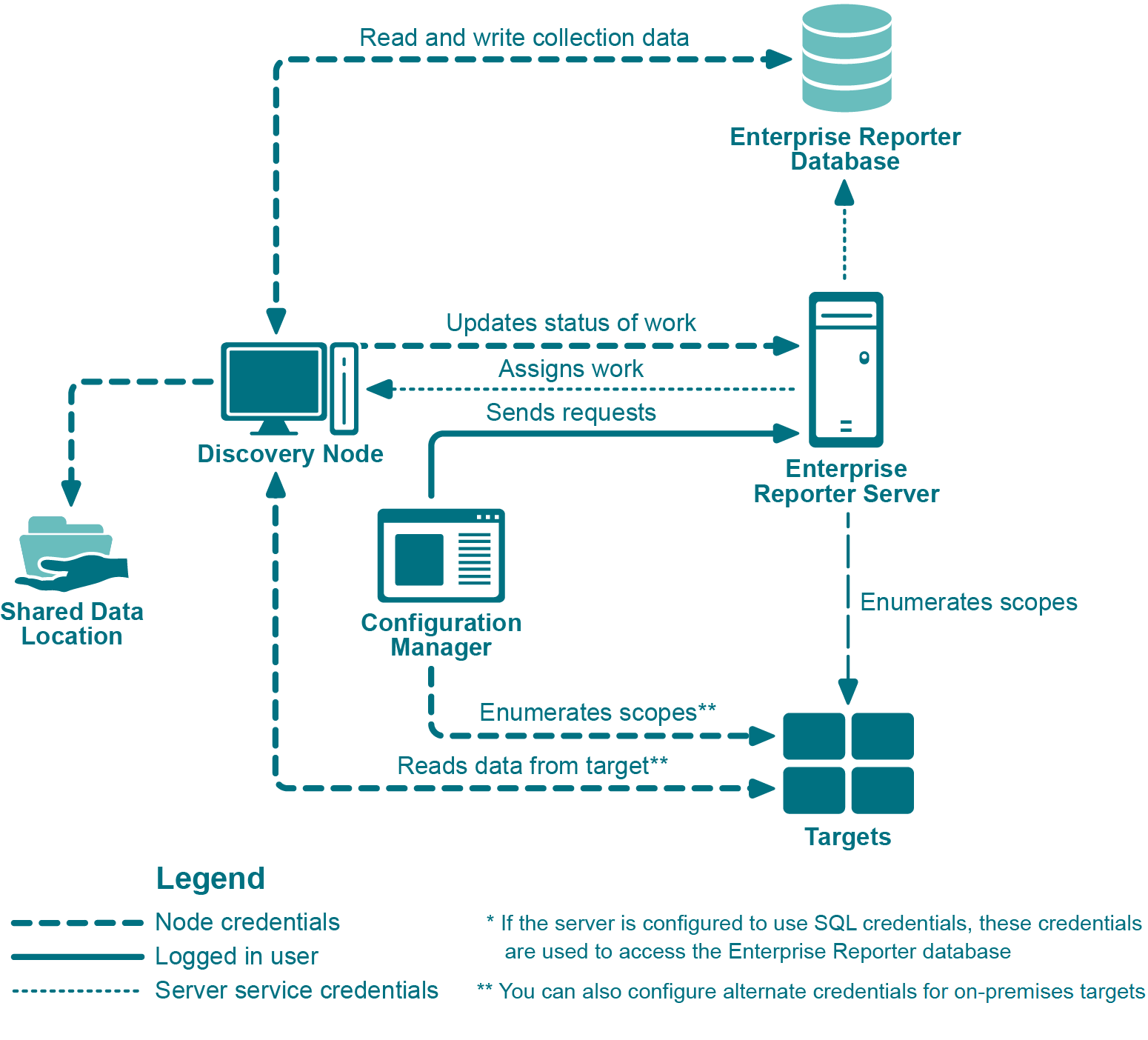System Requirements
For the Enterprise Reporter Server, we recommend the following minimum hardware.
| |||
|
For the Configuration Manager and Report Manager, we recommend the following minimum hardware.
| |||
| |||
For the Enterprise Reporter SQL Server, we recommend the following minimum hardware.
| |||
The following hardware is required for Enterprise Reporter 3.2 and higher.
|
• |
Intel® or AMD 2 GHz multiprocessor (with at least 2 cores) |
The following operating systems are supported for Enterprise Reporter components.
|
Windows Server® 20H2 |
|||
|
Windows Server® 2004 |
|||
|
Windows Server® 1909 |
|||
|
Windows Server® 1903 |
|||
|
Windows Server® 2019 |
|||
|
Windows Server® 1809 |
|||
|
Windows Server® 2016 |
|||
|
Windows Server® 1803 |
|||
|
Windows® 11 |
|||
|
Windows® 10 |
|||
The following operating systems are supported for Enterprise Reporter discovery targets.
|
Windows Server® 2016 Functional Level |
|||||
|
Windows Server® 2012 R2 Functional Level |
|||||
|
Windows Server® 2012 Functional Level |
|||||
|
Windows Server® 2022 |
|||||
|
Windows Server® 20H2 |
|||||
|
Windows Server® 2004 |
|||||
|
Windows Server® 1909 |
|||||
|
Windows Server® 1903 |
|||||
|
Windows Server® 2019 and 1809 |
|||||
|
Windows Server® 2016 and 1803 |
|||||
|
Windows Server® 2012, 2012 R2, and 2012 Core |
|||||
|
Windows® 11 |
|||||
|
Windows® 10 |
|||||
|
Windows® 8.1 |
|||||
|
NetApp® 9.4 |
|||||
|
NetApp® 9.3 |
|||||
|
EMC® VNX 7.1.47.5 X (Supported by collecting as a Windows Server) |
|||||
|
EMC® VNX 7.0.35.3 X (Supported by collecting as a Windows Server) |
|||||
|
SQL Server® 2022 |
|||||
|
SQL Server® 2019 |
|||||
|
SQL Server® 2017 |
|||||
|
SQL Server® Clusters |
|||||
|
SQL Server® 2016 |
|||||
|
SQL Server® 2014 |
|||||
|
SQL Server® 2012 |
|||||
|
Exchange® 2019 |
|||||
|
Exchange® 2016 |
|||||
|
Exchange® 2013 |
|||||
Enterprise Reporter can support IPv6 (Internet Protocol version 6) as well as IPv4.
The following versions of SQL Server® are supported for the Enterprise Reporter database. See the Microsoft® web site for the hardware and software requirements for your version of SQL Server®:
|
• |
SQL Server® 2022 |
|
• |
SQL Server® 2019 |
|
• |
SQL Server® 2017 |
|
• |
SQL Server® 2016 |
|
• |
SQL Server® 2014 |
|
• |
SQL Server® 2016 Always On |
|
• |
SQL Server® 2014 Always On |
Enterprise Reporter can be configured to work with a SQL Server® instance. To secure communications while working with Enterprise Reporter, data sent over connections to the SQL Server can be encrypted using an SSL certificate.
The steps required to configure this encryption are as follows.
The following software is required for Enterprise Reporter.
For more information and installation instructions, see the Active Roles Quick Start Guide.
The following additional considerations are required:
To collect Exchange information, the following additional considerations are required:
To collect Exchange mailbox folders, the following additional considerations are required:
To collect Exchange Online information, the following additional considerations are required:
The following services are required on the Enterprise Reporter server and nodes.
The following services must be enabled on discovery targets for collections.
Overview of Enterprise Reporter communications and required credentials
Figure 2 outlines where and for what each of the credentials are used, and the following tables explain the necessary permissions. For information on managing the credentials used in the Configuration Manager, see the Using the Credential Manager section in the Quest Enterprise Reporter Configuration Manager User Guide.
Node credential and alternate credential details for on-premises discoveries
Detailed permissions for Enterprise Reporter discoveries
The following table outlines the permissions required for Enterprise Reporter discoveries.

